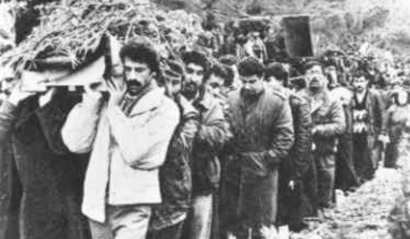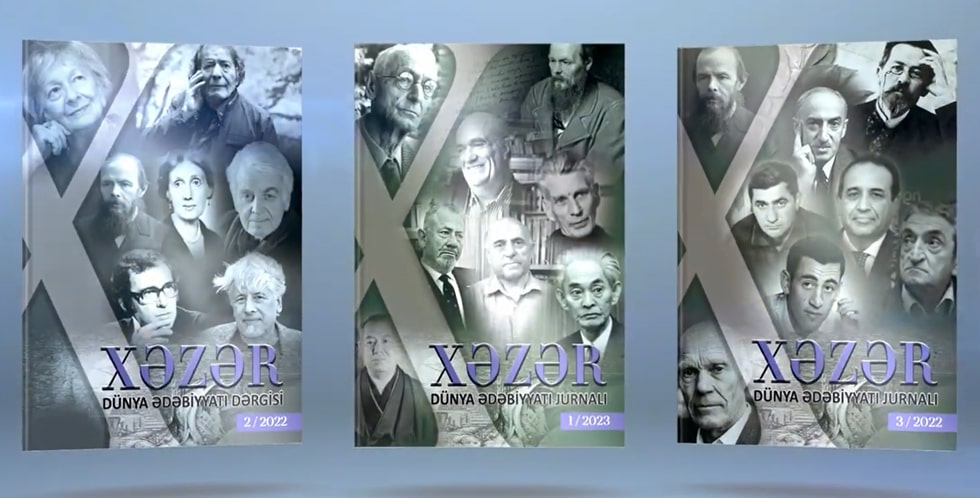20 January Massacre: Through the Eyes of Witnesses

Twenty nine years have passed since that tragic January events in Azerbaijan which went down into the country’s history as “Bloody January”.
The bloody night procreated by the totalitarian Soviet regime against the peaceful people nowadays is evaluated as a violent crime against humanity
According to the official facts, in the night from the 19th to the 20th January 1990, the units of the special and the internal forces of the Soviet army entered Baku and acted severely against peaceful Azerbaijanis.
Due to the illegal occupation of Baku 147 unarmed civilians were mercilessly killed regardless of their nationality, age or sex, including children, women and the elderly, and 744 peaceful, innocent inhabitants of Baku, suburban settlements and surrounding areas were injured. Military forces destructed 200 flats, 80 automobiles, including first aid cars; because of burning bullets and fires considerable state and private property was deeply affected. Women, children and the elderly, staff members of first aid teams and policemen were among the dead.
Doctors that were on duties that night share their memories with us:
Vugar Yusifzade, Doctor at Clinical Hospital (till 1990 it was n.a. Semashko)
“Over the night from 19 to 20-th January, I was near the Salyan Barracks. Tanks were moving from the territory of the military school and young soldiers were sitting on the manhole. An officer came up and asked us to get out of the way. We sat down on the pavement in front of the military school. At that moment, the soldiers on the tank threw smoke grenade at our side. When the smoke cleared, we saw that there were some soldiers in 50 steps from us. The official's order was heard, and the triggers of submachine guns were pulled.
The soldiers yelled "Hurrah", "Forward" and rushed upon a crowd of about 40 people including women. There was a panic, and we ran away. I could hide behind bushes. I heard a bark of the guns at the back, several people were injured and I saw the soldiers come up to the injured and beat them with the butts of automatic rifles. So, the armed forces cleared the way, and then the tanks rolled forward over the bodies of the fallen.”
Eldar Aliyev, doctor-anaesthesiologist at Clinical Experimental Surgery Institute:
“As soon as the shooting began, many surgeons who had cars, immediately drove to work. The wounded were brought to the hospital after 1 a.m., and the first operation was carried out at 2:00. The whole night without any break, we had operations one after another. In the morning, we learned that the same situation was observed in other clinics of the city.”
Nushaba Asadzade, doctor- therapist:
“The corpses were put in the bathroom and from there were carried to morgues. The number of the injured grew on minutes. As there were not empty rooms, the doctors were carrying out operations not only in their rooms, but also even in bandaging points, as there were not empty rooms. The flow of the injured and the wound didn’t stop on January 20 and the next days.
Jahangir Huseynov – Former Chief Physician, Hospital for Emergency Aid:
One hundred seventy six injured were brought to our hospital on January 20. Two days our surgeons without stopping carried out operations.
This fact disproves the official news broadcast by Moscow that only one hundred persons were wounded that night when the Soviet military forces entered Baku.
Besides the injured, corpses were also brought to the hospital. On January 20, early in the morning 30 corpses were brought to the morgue at the hospital. There were cases when the injured died.
Adalat Rustamov - Surgeon, Hospital for Emergency Aid:
It was exactly 12:30 a.m. on January 20 when the light at the hospital was turned off. We were operating on the wounded under the candlelight, and then kerosene lamps were brought. Fortunately, the hospital had its own generator, and very soon, we were able to run it.
D. Huseynov, surgeon:
I have been working as a surgeon for 35 years. I have much ever seen such kind of injured in my long life, but that was an exception. One bullet has destroyed not only the internal organs, but also the bones of the injured.
Fuad Aliyev, pathologist:
On January 20 at almost midday 85 corpses were brought to our morgue. Seventy five of them were shot on back; two of them were tortured and beaten to death with blunt tools; six of them were crushed by BTR; and two people were killed sharp tools: their bodies were cut and punctured. One of the corpses were shot six times from a very close distance. It was clear that the military forces had tried to kill more peaceful people.”
Fuad Abdullayev, doctor, Clinic Hospital n.a. Mirgasimov:
“I was on duty that night. I saw that the militaries didn't let our doctors and nurses approach the wounded and dead bodies.
The number of the wounded and killed was more in front of our hospital and near the monument to XI Red Army then; tanks had opened fire on civilians from there.”
Jahangir Atakishiyev, doctor-urologist, Clinic Hospital n.a. Mirgasimov:
“Fuad and I were on duty. When shooting began, I went up to the roof. I could see the hideous scenery of cruelty: tanks circled the square in front of the monument to XI Red Army, shot and ran over civilians, heading further into urban avenues. Too many people were killed there. Civilians didn't engage fire on the tanks, they were unarmed. There were too many victims, as the area in front of the monument was large enough and one could hardly escape from the tanks. As soon as the tanks drove away, we ran to render the first medical aid to injured victims. From 12:30 a.m. we started to take in the wounded. Besides the injured with fire-arms, we had patients with symptoms of poisoning. They were vomiting, coughing up blood, suffocating and they had eyes watery. When we made incision in the region of the abdominal cavity, the air in the surgery room smelled gas. We were obliged to stop the operation and to air out the space. We dealt with the injured till early morning; only around 6 a.m. the flow of the injured became lowered.
One of our nurses also came across a bullet while accompanying the injured to the hospital. That time 38 injured were admitted to our hospital and we couldn’t save the lives of 6 of them. They died during the surgical operations. 40 injured were admitted to the Traumatology Department. They were all young people, the oldest were about 30.”
M. Gasimov, Former Chief Physician, Republican Hospital:
On January 21st bandages, antibiotics and sedative drugs at the hospital ran out. Only blood resources were not a problem as people started to come to the station of blood transfusion and donate blood in the morning. Volunteers were also at our hospital and donated blood, our doctors and nurses replenished the blood bank. Doctors from Agsu, Shamakhy, Beylagan and other cities of the Republic provided us with medication and surgical supplies. We didn’t get any assistance from Moscow and other cities of the USSR. On January 25, there were only three wounded at the Reanimation department, all other wounded were moved to wards. We would get ready to receive the injured at the Reanimation department if there were new attacks by the Soviet Army. For doctors the probability of a new attack was too high.
On January 20, at midday, almost three thousand people came to our medical laboratory to donate blood. We took blood from one hundred forty five persons, and the rest were sent to the Republican Blood Transfusion Point.
Soltan Aliyev, Former Deputy Chief Physician, Republican Hospital:
“On January 20, besides the duty medical officers, we arranged 31 brigades comprising a range of medical specialists: they had to carry out their duties at the hospital by replacing one another day and night. All big hospitals in Baku shifted to a stricter work schedule. We had stocked up all kind of medicine as we were waiting for another flow of the injured. Fortunately, it didn’t happen. It should be stated that if any preparatory activities on receiving the new injured hadn’t been carried out, then the stressful experiences that the medical staff could get through at the hospital would have increased.
P.S. Terrible events of 20 September, 1990 that ran in front of the medical staff’s eyes were so touching that only the psychological shocks that they had could be overcome by getting prepared to meet the next flow of the injured.
Shirin Manafov
AND OTHER...
-
 Book “Fuzuli’s Creativity” by Mir Jalal Out in Jordan
Book “Fuzuli’s Creativity” by Mir Jalal Out in Jordan
The book “Fuzuli’s Creativity” by the famous Azerbaijani writer and literary scholar Mir Jalal, which tells about the works of the brilliant Azerbaijani poet...
-
 Yusif Vazir Chamanzaminli’s Creativity in the Israeli Literary Magazine
Yusif Vazir Chamanzaminli’s Creativity in the Israeli Literary Magazine
“Artikl”, the popular Israeli literary magazine, has posted in Russian an excerpt from the novel “In the Crossfire” by Yusif Vazir Chamanzaminli, the outstanding...









